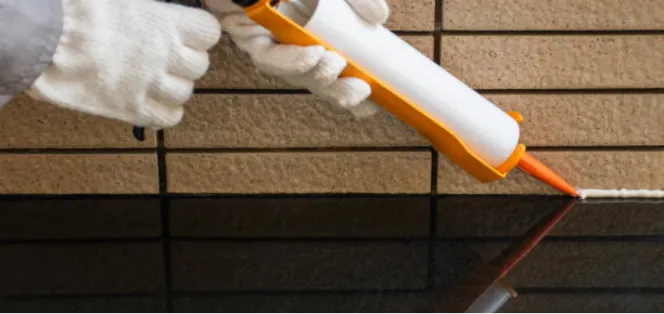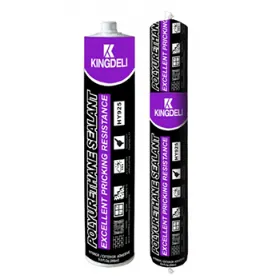Polyurethane vs MS Sealant in Building Works


Introduction
Every building job, whether it’s a tall office, a busy mall, or a cozy house, needs sealants. These materials don’t grab attention like steel or concrete, but they’re super important. Sealants fill gaps to keep out air, water, and dust. They also let parts of a building shift a bit without breaking.
Polyurethane and MS polymer are two top sealants used today. Both work well, but each has its own strengths and weaknesses. If you’re a builder, architect, or property manager, knowing their differences helps you pick the right one. This article explains how each sealant functions, compares their abilities, and shows where they work best.
What Polyurethane Sealant Is
Material Characteristics
Polyurethane sealants come from urethane chemistry. They’ve been around for years and became popular fast in construction. Why? They’re tough against wear, stick strongly, and stay stretchy. They can bend with movement and snap back. Once set, many polyurethane sealants can be painted, which is handy for spots that show.
Key benefits include:
High resistance to tears and scratches.
Strong sticking to concrete, metal, and other surfaces.
Can work as both a sealant and glue in some cases.
But there are downsides. Polyurethane needs dry surfaces to set properly. It’s less stable in very hot places. Sunlight can also weaken it unless special ingredients are added.
Common Applications in Building
Polyurethane is often picked for expansion joints in concrete floors, walkways, or factory zones with lots of foot or vehicle traffic. It’s also used in roofing joints, wall panels, and heavy duty sealing where forces are strong. In many projects, polyurethane sealant for construction keeps joints tight against water and air.
What MS Sealant Is
Material Characteristics
MS sealant, or silane modified polymer, mixes silicone’s bendiness with polyurethane’s sticking power. It sets with moisture and forms a strong, stretchy layer. Unlike some polyurethane sealants, MS sealants are usually low odor and VOC free, making them safer for indoor or lived in spaces.
Key advantages include:
Stays strong under UV rays and harsh weather.
No bubbles while setting.
Can be painted and has little smell.
Sticks to many materials, often without needing a primer.
Common Applications in Building
MS sealants shine in curtain walls, cladding, and glass bonding where looks matter. They’re common in kitchens, bathrooms, and damp areas because they handle water well. Indoor decorating benefits from their low smell, which is nicer for workers and residents. For example, MS polymer sealant is used when strength, stretch, and good appearance all count.
Polyurethane vs MS Sealant Performance
Adhesion and Bonding
Polyurethane sticks tightly to rough materials like concrete and wood. It’s great for structural joints. MS sealants, though, cling to almost anything, like coated metals and plastics. For projects with mixed materials, MS is often easier to use.
Durability and Weather Resistance
Polyurethane without additives can weaken under sunlight. MS sealants naturally hold up against sun and weather, making them better for open joints. For outdoor facades, glass, or curtain walls, MS is the stronger choice.
Flexibility and Movement Capacity
Both sealants stretch with movement, but MS stays stretchy longer. Polyurethane is tougher for heavy loads, like big expansion joints in highways or airports. In building work, polyurethane suits high stress floor joints, while MS is perfect for vertical or pretty joints.

Choosing Between Polyurethane and MS in Building Projects
Indoor vs Outdoor Applications
Indoors, polyurethane handles structural joints in floors or walls. MS is better for visible, wet spots like bathrooms. Outdoors, MS stands up to sun and rain. Polyurethane may need extra UV protection.
Environmental and Health Considerations
MS sealants are usually safer for lived in buildings since they’re low VOC. Polyurethane can have a stronger smell while setting. For projects where clean air matters, MS is the better pick.
Long Term Maintenance
Polyurethane might need repainting or recoating sooner in open conditions. MS, with its weather resistance, lasts longer with less care. For property managers, this means fewer fix up jobs.
Practical Examples in Building Works
Flooring and Expansion Joints
Picture a busy shopping center with tons of visitors daily. The floor joints must handle people and carts. Polyurethane is often chosen here because it resists wear and stretches under weight.
Facades and Glazing
For a glass facade on an office, MS sealant is the go to. It fights UV rays, sticks to glass and metal, and can be painted if needed. Workers like it because it sets without a strong smell.
Bathrooms and Wet Areas
In bathrooms, kitchens, or spa zones, MS works better. It holds up to steam and frequent cleaning. Its low smell during use is a bonus in lived in spaces.
Case in Point: Industry Use
One factory in Asia sealed hundreds of meters of expansion joints in a concrete floor. Polyurethane was picked for its wear resistance, standing up to forklift traffic for years. Meanwhile, in coastal residential towers, MS was used for facade joints. It resisted UV and salty air, keeping the look clean with less upkeep. These cases show why project managers must think about site conditions before choosing a sealant.
About Kingdeli
Picking the right sealant is simpler with a trusted supplier. Kingdeli has made adhesives and sealants for over 20 years. As a world class sealant manufacturer, Kingdeli offers both polyurethane and MS products for construction. This lets builders match the perfect product to each job.
FAQ
Q1: Can polyurethane and MS sealants both be painted?
A: Yes, both can be painted after setting. This makes them great for joints that need to look neat.
Q2: Which sealant lasts longer outdoors?
A: MS sealants usually last longer outside. They resist UV and weather better than standard polyurethane.
Q3: Are MS sealants safe for indoor use?
A: Yes, MS sealants are often low VOC and low odor. They’re safer for closed spaces like offices or homes.
Q4: When should you pick polyurethane over MS in construction?
A: Polyurethane is stronger for structural joints in floors, highways, or heavy duty expansion areas. MS is better for facades, windows, or wet, decorative zones.
Q5: Do both sealants need primers on all surfaces?
A: Polyurethane might need a primer on some surfaces for best sticking. MS sealants usually bond well without primers, especially on smooth or coated materials.
